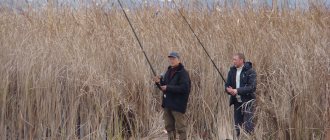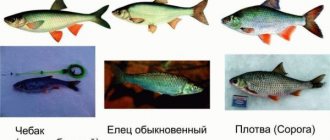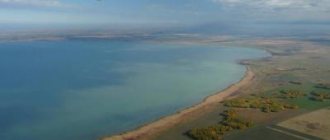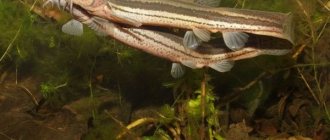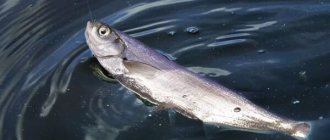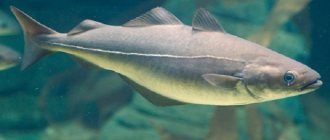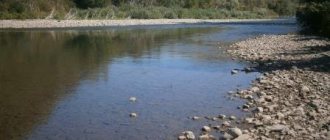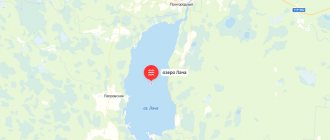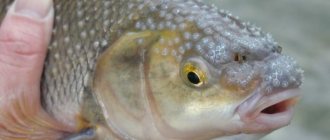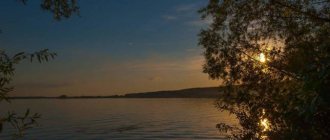Tulka is a small commercial sea fish belonging to the herring family.
Until recently, common sprat was divided into two subspecies. But as a result of the taxonomic revision, two independent species were identified - Caspian and Dzhargalen. The entire genus of kiln consists of 7 species. Are you making fish pies?
- Yes 83%, 298 votes
298 votes 83%298 votes - 83% of all votes
- No 14%, 51 votes
51 votes 14%
51 votes - 14% of all votes
- I don't eat fish 3%, 12 votes
12 votes 3%
12 votes - 3% of all votes
Total votes: 361
15.01.2020
Characteristic
A small-sized fish belonging to the herring family is the sprat. Its body rarely exceeds a length of 15 centimeters, and its weight rarely reaches more than 20 grams. Among other marine representatives, it is recognizable by its strongly flattened sides, as can be seen from the photo. Its scales are large and fall off easily. The abdomen and sides have a light silver color, and the upper part of the head has greenish and bluish shades. Looks pretty nice.
You can distinguish a male from a female by size. The first representative is slightly smaller than the female, as it grows more slowly. The maximum age they reach is six years. Individuals become adults when they reach two years of age.
Yandex pictures
Where to catch pike perch using sprat
In winter, pike perch can be caught using sprat both directly on the river bed and in numerous deep-water bays. The fanged one is distinguished by the fact that it is an active predator and constantly moves around the water area.
Schools of pike perch move along almost the same route: in the first ice they move faster, in the dead of winter a little slower. At some points the fish linger in search of prey:
- snags;
- boulders;
- characteristic pits and navels;
- current boundaries.
Experienced fishermen immediately fix catchy points and look for pike perch on them year after year, since the school always stays in a certain water area with small shifts that occur due to a sharp change in the river topography, which happens quite rarely.
Attention! Speaking about catch points, you need to remember that the school of pike perch is quite large. Thus, it is more fair to talk about a certain spot reaching 10-20 meters in diameter.
It is also useful to know the general topography of the water area. For example, the famous eyebrows. Pike perch can move along the coastal and riverbed slopes. Moreover, closer to shallow water, you should fish for pike perch at dusk. He comes here for small fish in the winter, repeating his summer habits. More details about catching pike perch in winter and its habits at this time of year are described here.
Composition and KBJU
Black Sea Caspian sprat is famous for its high fat content, which accounts for about 18 percent of its composition. 100 grams of fresh fruit contains about 88 kilocalories, 70 calories come from proteins.
Nutritional value may vary depending on cooking methods. Boiled, baked or salted fish have the lowest KBJU index. The highest percentage goes to the fried dish.
Calories, proteins, fats and carbohydrates per 100 grams:
- proteins – 17.5 grams;
- fats – the indicator ranges from 4 to 30 (conditions and methods of preparation);
- There are no carbohydrates in fish.
Like any sea and other fish, this representative contains a large number of elements from the table of Dmitry Ivanovich Mendeleev. It contains calcium, phosphorus, iron, molybdenum, vitamins PP, potassium, magnesium, chlorine, vitamins B1 and B2, and so on.
Types of sprat
This fish has several types. The most famous of them is the Black Sea-Caspian sprat, which is also called Caspian sprat. In addition, it is known:
Abrau sprat: characterized by smaller size (9 cm, 10 g), life expectancy (2 years), spawning time (May-October); lives near Novorossiysk in Lake Abrau; there is a subspecies of it that lives in the Turkish Lake Abuliond;
Anchovy sprat: fish, mainly from the southern and middle Caspian Sea, the most numerous in it; spawning period May-December; the usual depths of its habitat are 10...20 m, in winter 90...110 m; in the characteristics of the species - daily vertical migration;
Big-eyed sprat: This is a special species of Caspian sprat that lives under the thermocline; the usual depths of its habitat are 80...100 m (fry 400 m), it is not found above a depth of 20 meters; spawns all year round with a peak in January-March.
Habitats
The fish loves warm waters, which create optimal conditions for spawning. It is found mainly in the waters of the Azov, Caspian and Black Seas, preferring desalinated areas. In recent years, fish migration has brought them to the upper reaches of rivers. Now it can be found in lakes and artificial reservoirs. Their migration along rivers begins with the onset of spring, moving away from the sea to a distance of 70 kilometers.
Yandex pictures
Kilka: photo, preparation, benefits and harm
Common sprat (sausage, Black Sea-Caspian sprat, Black Sea-Azov sprat) (lat. Clupeonella cultriventris) is a small fish of the Herring family. It is an object of industrial fishing. Lives in the Black, Azov and Caspian seas.
Until recently, it was believed that the common sprat had two subspecies, but the latest taxonomic revision established the presence of two independent species - the Caspian sprat and the Dzhargalen sprat. In total, there are 7 species in the genus of kilns.
In what follows we will only talk about common sprat.
Benefits of use
All the beneficial properties of fish are included in its composition. But since eating this fish has its contraindications, it is better to analyze it in more detail:
- Fatty acids have a particular beneficial effect on the body of women and older people. They reduce the risk of cardiovascular diseases. Improves mental activity, enhances concentration. They can lower blood pressure and are also indispensable for the prevention of diabetes of any type.
- Few people know, but calcium reduces the risk of malignant cells and prevents the formation of polyps in the intestines. Reduces the likelihood of cancer. Plus, it takes an active part in building the normal functionality of the musculoskeletal system, developing and strengthening bone tissue. Regulates blood clotting. It has a beneficial effect on the growth and strengthening of hair, nail plates and teeth.
- Phosphorus helps the body absorb calcium. It is also indispensable for damage to muscle tissue, helps in its contraction and improves condition after training. It has a beneficial effect on the children's body, improving concentration, intelligence and reducing nervousness in children.
Help: Phosphorus is found in large quantities in fish skin, spine and tail, which is why experts recommend cooking the sprat whole.
- Iron plays the main role in hemoglobin molecules. It delivers oxygen from the lungs to the tissues and carbon dioxide in the opposite direction.
- 100 grams of sprat contains 430 mcg of fluoride, which helps restore tooth enamel after contact with an acidic environment.
- The microelement nickel takes an active part in hematopoiesis and other regenerative processes in the body.
- Chlorine, the content of which in one hundred grams of fish is 165 mg, helps remove salts and fluid from the body, and also normalizes the acid-base balance.
- Molybdenum normalizes metabolism, breaks down proteins, and promotes the production of vitamins.
Yandex pictures
The benefits of sprat
The benefit of sprat (like most sea fish) for the human body is its high content of phosphorus, calcium and iodine, as well as other beneficial substances. Small sprat bones soften well during cooking or salting, so they are perfectly absorbed by the body. It is known that sprat tails and bones contain much more of these elements than, for example, sturgeon.
In addition, the benefits of sprat are obvious due to the content of a whole set of amino acids vital for humans, of which there are 23 names. These elements are especially necessary for women and the elderly, but it is important to consume this fish entirely.
Possible harm
The benefits of fish are obvious and it is difficult to imagine that a fish so small in size and large in purpose could have contraindications. This fact is influenced by the method of preparation, as well as additional ingredients.
It looks harmless, as in the photo, but when salted, sprat contains over 30 percent salt, which exceeds the daily requirement for the body several times. Therefore, in this form it is not recommended to be eaten by people suffering from high blood pressure. Who has problems with the heart, kidneys, blood vessels. People suffering from diseases of the gastrointestinal tract should not eat it.
Sprat canned in oil is found everywhere on all shelves in the country. Here, production technology on an industrial scale should be taken into account. For large quantities of a product with a low final cost, it is rare that high-quality components are used. Tests show that canned oil is not of the best quality, which means that it contains a certain percentage of carcinogens.
One hundred grams of canned sprat has 320 kilocalories, while fish canned in its own juice has only 200 kilocalories.
Yandex pictures
Harm of sprat
Despite all its beneficial qualities, salted sprat can hardly be called a healthy food product. This is due to the fact that 100.0 g of well-salted fish contains at least 1.5 g of table salt, which is 30% of the daily requirement. Therefore, salted sprat should be eaten in small quantities and not every day. This food product should be completely excluded from the diet of people suffering from kidney and cardiovascular diseases. It is best for them to eat boiled or baked sprat, which has valuable beneficial properties and does not contribute to the development of edema or increased blood pressure.
Canned sprat in oil is also not a healthy food product, because they contain excess of both oil and salt. It should be borne in mind that for the production of canned food, most manufacturers use the cheapest varieties of vegetable oil, which practically do not contain vitamins and fatty acids, and, therefore, do not give anything to a person except extra calories. So, for example, the calorie content of sprat in its own juice is about 200 kcal per 100.0 g of product, and the calorie content of the same amount of canned sprat in oil is already 320 kcal.
Video from YouTube on the topic of the article:
Found an error in the text? Select it and press Ctrl + Enter.
The well-known drug Viagra was originally developed for the treatment of arterial hypertension.
The first vibrator was invented in the 19th century. It was powered by a steam engine and was intended to treat female hysteria.
Regular use of a solarium increases your chance of developing skin cancer by 60%.
You are more likely to break your neck if you fall off a donkey than if you fall off a horse. Just don't try to refute this statement.
In the UK there is a law according to which a surgeon can refuse to perform an operation on a patient if he smokes or is overweight. A person must give up bad habits, and then, perhaps, he will not need surgical intervention.
Tooth decay is the most common infectious disease in the world, which even the flu cannot compete with.
Besides people, only one living creature on planet Earth suffers from prostatitis - dogs. These are truly our most faithful friends.
American scientists conducted experiments on mice and came to the conclusion that watermelon juice prevents the development of vascular atherosclerosis. One group of mice drank plain water, and the second group drank watermelon juice. As a result, the vessels of the second group were free of cholesterol plaques.
When lovers kiss, each of them loses 6.4 calories per minute, but at the same time they exchange almost 300 types of different bacteria.
The liver is the heaviest organ in our body. Its average weight is 1.5 kg.
When we sneeze, our body stops working completely. Even the heart stops.
Scientists from Oxford University conducted a series of studies in which they came to the conclusion that vegetarianism can be harmful to the human brain, as it leads to a decrease in its mass. Therefore, scientists recommend not completely excluding fish and meat from your diet.
74-year-old Australian resident James Harrison has donated blood about 1,000 times. He has a rare blood type whose antibodies help newborns with severe anemia survive. Thus, the Australian saved about two million children.
The human stomach copes well with foreign objects without medical intervention. It is known that gastric juice can even dissolve coins.
Human blood “runs” through the vessels under enormous pressure and, if their integrity is violated, it can shoot at a distance of up to 10 meters.
Partial absence of teeth or even complete edentia can be a consequence of injury, caries or gum disease. However, lost teeth can be replaced with dentures.
Kinds
With slight external differences, fish are divided into types:
- ordinary. This species is divided into two subspecies, Azov sprat, Caspian sprat;
- Black Sea Caspian;
- big-eyed;
- Abrauskaya;
- anchovy-shaped.
Azovskaya
The Azov sprat lives in the Sea of Azov and stands out for its large numbers not only in its genus, but also in the entire herring family. It actively spawns in May, at a water temperature of 15-20 degrees.
Help: If you divide the fish of the Azov subspecies among the entire population of the planet, then each person will get fifteen fish.
In the cold season, it mainly lives in the sea, and in the spring it approaches the shores. It is not uncommon for sprat to be used as bait to catch predatory representatives of the deep sea. She herself feeds on a variety of small crustaceans, plankton, and other vegetation, not shying away from hunting species of animal origin. They catch fish using seines, but they are of no interest to fishermen with fishing rods.
Information: In common parlance, the Black Sea fish also has another name - “ampoule with fat.” This is the name given to the fish of the autumn catch because of its high fat content (more than 18 percent).
Yandex pictures
Tulka
Sprat or sausage - (lat. Clupeonella delicatula delicatula (Nordmann)).
Signs. The mouth is small, the articulation of the lower jaw with the skull is under the middle of the eye, the posterior end of the upper jaw is under the anterior edge of the eye. There are no fatty eyelids on the eyes.
The last two rays of the anal fin are elongated. The body, and especially the belly, is compressed laterally; belly with well-developed keel. Abdominal spines 26-29. Vertebrae 39-44.
Related forms. The closest is Caspian sprat, CI. delicatula caspia, characterized by its large size and large number of gill rakers.
https://www.youtube.com/watch?v=hvJD6xv9oLQ
Next comes big-eyed, CI. grimmi, and ancho-whiskered, CI. engrauliformis, sprat, found only in the Caspian Sea. In the lake Abrau (near Novorossiysk) and in lake. Abulyond (Türkiye, Marmara Sea basin) there is a special type of CI. abrau.
Spreading. Desalinated parts of the Black Sea and the Sea of Azov. It enters rivers, sometimes rises quite high upstream (in the Danube - to Brailov and higher, to Lake Kalarash, in the Bug - to the rapids, in the Dnieper - to Nikopol). Oz. Paleostom.
Biology of sprat
Characteristic. Marine brackish-water schooling pelagic fish. As a rule, it lives in somewhat desalinated seawater, with a salt content not exceeding 13°/00C1 (chlorine), and also enters fresh water in large numbers.
Spawning occurs in the Sea of Azov from April to August. The main spawning sites are in the Taganrog Bay. It also spawns in the estuaries of the northwestern part of the Black Sea, where it stays all year round, as well as in some Kuban estuaries and rivers (Dnieper, Danube, etc.).
Eggs are spawned at water temperatures from 4-5 to 24° and salinity from 0 to 10% (usually below 5%). The height of spawning is in May, at a temperature of sprat from 13 to 20°.
Development. The eggs are floating (pelagic), distributed in the sea in the surface layers of water. The eggs have a fat drop and a large perivitelline (circumyolk) space, the egg diameter is 0.8-1.05 mm.
The incubation period at an average temperature of 10° lasts 98 hours, at 14° - 62 hours, at 20° - 25 hours.
Hatching larvae are 1.8-1.9 mm long. The yolk sac dissolves when the larva reaches a length of 3.8-4 mm.
The fertility of the Black Sea-Azov sprat ranges from 5.2 to 20.1 thousand eggs, on average about 10.6 thousand.
Height. Males reach a length of 8 cm, females - 9 cm (to the end of the middle rays C).
In the Sea of Azov in the pre-war years, two-year-old and one-year-old individuals predominated in the catches, there were few three-year-olds, and almost no four-year-olds were encountered.
Nutrition. Planktivorous fish is the main consumer of plankton in the Sea of Azov. The main food components are copepods and cladocerans, mysids and other zooplankton organisms.
Competitors. Other planktivorous fish in the Sea of Azov are mainly the Azov belly fish.
Enemies. Pike perch, herring, partly sturgeon and other fish.
Migrations. In January - March, the main mass of sprat stays away from the coast, in the central part of the Azov Sea. In April, the sprat begins to enter the Taganrog Bay, where it gathers in large numbers in May - June.
Marinating in oil
Nutritional value: 225.6 kcal/10.5g/19.7g/1.6g.
What do you need:
- sprat – 1000 grams;
- vegetable oil – 100 g;
- onion – 45 grams;
- carrots – 0.1 kg;
- garlic – 2 g;
- 9 percent vinegar – 100 ml;
- bay leaf, spices;
- water – 100 ml.
How to do:
- Make a marinade by mixing vinegar, oil, spices, diced onion, grated carrots and chopped garlic.
- The marinade is put on fire and brought to a boil.
- The fish is cleaned and washed, removing the heads and entrails.
- The carcasses are well seasoned with salt and left for a couple of hours.
- Then, the fish is washed and marinated.
The pickled sprat is ready the next day.
freepik.com
Tulka in cooking
This small fish is widely used in cooking. It is useful due to its relatively low calorie content
(88 kcal), the presence in it of a large amount of Omega-3 polyunsaturated fats, amino acids, vitamins (in particular PP), iodine, fluorine, phosphorus, chlorine, calcium.
Thanks to everything, sprat meat is useful for those who have heart problems and suffer from atherosclerosis. Fish will help keep your nails, bones, and hair healthy for a long time. It helps normalize cholesterol in the blood.
Tulka is prepared in different ways. It is fried, stewed, boiled, dried, salted; Canned sprat can also be prepared at home. Of the latter, those made with the addition of tomato are especially good.
As a rule, sprat is eaten whole. This allows you to receive more calcium, which is found in its skin, tail, and bones. When frying or stewing, the latter soften so much that their eating is simply not noticed.
There are no contraindications for consuming sprat. Only those people who are allergic to everything that comes from the sea cannot eat it.
Recipes for sprat dishes
Sprat cutlets
This dish is easy to prepare. The sprat is defrosted (if you bought one), washed, cleaned (the insides and heads are removed. The rest is left. Then the carcasses are passed through a meat grinder.
A loaf of fish (pre-soaked in milk), spices, eggs, and salt are added to the resulting minced fish. Finely chopped onions wouldn't hurt. Mix everything and beat it.
Then they take some of the minced meat, form cutlets and fry them. The latter can be done. Immediately place the pieces on a hot frying pan. Most housewives first roll them in flour and breadcrumbs.
Pickled sprat recipe
This recipe is more complicated than the previous one, and you will need more additional ingredients. Among the latter, except, of course, the sprat itself, of which they take, for example, a kilogram, prepare: 6 tablespoons of vegetable oil, an onion, small carrots (2 pieces), garlic (3 cloves), half a glass of 9% table vinegar, half a glass of water , laurel (1 leaf). To prepare sprat you will need pepper and salt.
The sprat is marinated in the following sequence:
Prepare the marinade:
Peel garlic, onions; cut them coarsely;
Peel the carrots and cut them into slices;
A large bowl is filled with vinegar, oil; add chopped onions, carrots, garlic; pour in water; salt with two pinches of salt; they throw laurel and pepper; mix everything;
Place the bowl on the fire, heat to a boil;
The seals are cleaned, the entrails are removed, and the heads are separated; salt and leave for 2 hours. salt;
After the fish are rinsed with water, put in a glass or porcelain mold;
Pour the marinade prepared earlier and brought to a boil over the laid out sprat;
In a day the sprat will be pickled.
Dried sprat
To prepare such sprat you will need the fish itself and salt, but not iodized salt.
If you bought frozen sprat (which, by the way, is guaranteed to be fresh, since the fish is frozen immediately after catching), then you need to defrost it. No need to put it under water. It’s better to put it in a bowl and put it in the refrigerator, on the top shelf. The fish will take a long time to defrost, but it will turn out just the way you want it.
After the fish becomes somewhat softer and even begins to fall off the general briquette with a little effort, it is taken out and begins to be salted.
First, all the fish are separated. Broken, damaged - koche, if any. Only whole carcasses are left. Then sprinkle salt on top (it’s hard to say how much; everything comes with experience, so experiment) and mix.
Afterwards, the bowl of fish is placed in the refrigerator. In 7 hours They take out one fish, wash it and try it. If you don’t like it, leave it for another hour and repeat the testing procedure. Continue this way until the sprat reaches the desired salinity.
Vyat., Penz., Vologda. blockhead, block, stump; | plump, seeded, otorie or bran. | Chernomor small herring, Alausa. | Tulka female, Tatar. fox, vixen. Tullyashit novg. walking is difficult, clumsy. Dahl's Explanatory Dictionary. IN AND. Dahl. 1863 1866 ... Dahl's Explanatory Dictionary
Sprat; deception, fiction Dictionary of Russian synonyms. sprat noun, number of synonyms: 7 fiction (52) sprat ... Dictionary of synonyms
sprat
- TULKA, and, TULYA, and, well. 1. Lies, deception. 2. Nonsense, nonsense, chatter. See also drive name. small fish; Wed outdated dial “tulka” blockhead, block, stump, plump, bran, “tulyashat” walk awkwardly ... Dictionary of Russian argot
Fish of the herring family. Dictionary of culinary terms. 2012 ... Culinary Dictionary
TULKA, sprat, female Small fish from the family. herring Ushakov's explanatory dictionary. D.N. Ushakov. 1935 1940 ... Ushakov's Explanatory Dictionary
TULKA, and, female Small fish herring Ozhegov's explanatory dictionary. S.I. Ozhegov, N.Yu. Shvedova. 1949 1992 ... Ozhegov's Explanatory Dictionary
Tulka, tulka, sausage (Clupea delicatula s. cultriventris) is a small (up to 3 inches) species of herring found in the Caspian and Black Sea. The body is highly compressed, wide; the length of the head is 1/5 2/9 of the length of the whole body; the mouth is completely toothless. Included in... ... Encyclopedia of Brockhaus and Efron
sprat
- and, well. tulle m. simple Tulle curtain. The spilts need to be washed already. Heard in Chita 22.2.2001 ... Historical Dictionary of Gallicisms of the Russian Language
I sprat fox, Tat. (Dahl). Borrowing from Turkic, cf. Crimea. Tat., Kypch., Kazakh., Alt., tel. tülkü, Uzbek. tulki, tour. tilki - the same (Radlov 3, 1385, 1570, 1768). II sprat I block, stump, Vologda, Penza, Vyatsk. (Dahl). Hardly related... ... Etymological Dictionary of the Russian Language by Max Vasmer
Drive the sprat [in a joint]. 1. Simple. To worry for no particular reason, for a minor reason. BMS 1998, 579. 2. Jarg. corner. To deceive, to lie. SRVS 4, 187; Homeowners' Association, 180; B., 37; SVYA, 22; Elistratov 2001, 484. 3. Zharg. corner, arrest Pretend... ... Large dictionary of Russian sayings
Books
- , Donaldson Julia. `Once upon a time there lived Tulka, a tiny fish, / A simple fish in a gray scaly coat. `The fish Tulka is late for school every morning and every time under a new pretext: she was jumping on a sea boat...
- Tulka. Little fish and big dreamer, Julia Donaldson. “Once upon a time there lived Tulka, a tiny fish, / A simple fish in a gray scaly coat...” The fish Tulka is late for school every morning and each time under a new pretext: she was jumping on a sea boat...
Casserole with cheese and garlic
Nutritional value: 177.1 kcal/14.9g/12.7g/0.9g.
What do you need:
- sprat – 1200 grams;
- spinach – 500 grams;
- cheese – 0.1 kg;
- onion – 1 piece;
- garlic – 2 cloves;
- egg – 60 g;
- butter, a mixture of Italian herbs, ground pepper, salt, breadcrumbs.
What to do:
- The fish is cleaned and washed, removing the heads and entrails.
- Finely chop the onion.
- The cheese is grated.
- Pour oil into a frying pan, fry onion and chopped garlic in it.
- Add spinach to vegetables and cook until softened.
- Grease a baking dish and place some of the fish on it.
- Mix spinach with cheese and beaten eggs. Salt and pepper.
- Distribute the mixture onto the fish.
- Place another layer of fish on top of the cheese-spinach mixture. Sprinkle with Italian herbs and breadcrumbs.
Bake for 45 minutes.
Fishing options
Fishing is carried out with different gear; below we will talk about the most common ones.
To the zherlitsa
Although fishing for a zherlitsa is considered passive by “athletes” and other advanced fishermen, it requires a lot of work from them. First, you need to make and equip the vents themselves. Moreover, the installation of the tackle is of great importance; a cautious pike perch is unlikely to approach a rough fishing rod.
Secondly, winter fishing with this gear involves drilling more than a dozen holes per trip, which sometimes, given the increasing thickness of the ice, can be a tedious task.
Thirdly, the zherlichnik simply must know the reservoir, because these stationary fishing rods cannot be placed anywhere, you need to clearly determine the pike perch’s place.
Equipment
Let's start with the girder itself. By design, you can choose any model, but consider the following conditions:
- In large spaces with decent distances between fishing rods, choose fishing rods with high-rising flags for better visualization of bites.
- On frosty days, use girders with circles at the base that cover the hole, on which additional snow is poured to prevent freezing.
Tackle can be made in two ways: for current and standing water. In the first case, a weight is attached to the end of the main fishing line of the girder, holding the tackle at the fishing point. A leash 10-15 centimeters long is tied above the sinker by about 20-30 cm.
The second option, used in still water, is practically no different from a regular pike fishing rod:
- A stop bead, an olive weight, and a second bead are sequentially put on the main fishing rod.
- A swivel is attached.
- A carabiner with a leash is attached to it.
- A hook is attached.
The live bait is located approximately 30-50 centimeters from the bottom; there is no need to raise it higher. In addition to the sprat itself, pike perch are caught with the following fish:
- bleak;
- Verkhovka;
- minnow;
- ruff;
- perch;
- roach;
- dace.
The equipment should not be coarse, but it does not need to be finely chopped either. In the current, use a fishing line with a diameter of 0.35 millimeters; in the bay, 0.30 is enough. The leash is preferably made of fluorocarbon, its thickness is 0.30-0.40 mm.
Installation tactics
The girders are placed at characteristic points:
- at the snag;
- along the edges;
- on the perimeters of local pits and tubercles.
Various devices will help you determine differences in the bottom topography: from the simplest depth gauge weight to an advanced echo sounder. It’s better to use both gadgets in combination: use an echolocator to determine the approximate area, and a depth gauge to find a characteristic point of difference. To do this, drill a series of holes across the slope at intervals of about a meter.
The fisherman should position himself approximately in the center of a kind of flower of exposed girders, so that everything is clearly visible, and so that he can run close to each one when triggered.
If there have been no bites for a long time, some of the gear needs to be moved to other, in your opinion, promising places. At the same time, it is better to leave the gear at points where you are sure. Perhaps the fish will still be good.
Fishing technique
Depending on the presence of current in the reservoir, the technique for installing the girders changes. On the riverbed you should act in the following sequence:
- Assemble the girder.
- Bait the sprat.
- Lower the tackle into the water until the sinker reaches the bottom.
- Pick up the slack.
- Give the line a little to ensure freedom for the bait fish.
- Secure the coil with a flag.
On a body of water with a weak current or no current, the procedure is slightly different:
- Assembling the girder.
- We lower the load to the bottom.
- We reel in 20-30 centimeters.
- We fix the coil with a flag.
- We take out the equipment.
- Let's bait the fish.
- We lower it into the hole.
As for the fishing technique, we proceed as follows:
- After the vent is triggered, we wait about 30 seconds. This is the time during which the predator pushes the bait into its mouth.
- We make a short sharp hook. Remember that the pike perch’s mouth is strong, it needs to be cut through.
- We carry out forced but smooth fishing, avoiding slack in the fishing line.
- If necessary, at the last stage we help with a hook or ligrip.
Attention! Under no circumstances should you lift the trophy from the hole on a fishing line; this can cause it to break and fall off. Always help with your hand or the above tools.
After removing the pike perch from the hook, you should quickly reload the bait and lower it into the same hole. Probably a flock has approached, and the bite will not be isolated. There were cases when 2-3 pike perch were taken out in a row.
Fishing with supplies
Next, we’ll tell you how to catch pike perch in winter using sprat using a stand-up tackle. It is also quite passive, but it is strikingly different from girder fishing.
Tackle
A standard winter fishing rod with a reel, handle and legs is used as a fishing rod. A fishing line 0.20-0.25 millimeters thick is wound onto the reel. If there is a possibility of hooking a truly trophy specimen, the thickness of the equipment should be increased to 0.30-0.35 mm.
An important attribute of the delivery is a bright nod, noticeable from a distance of 15-20 meters. Since up to 5 fishing rods are used, the distance between the extreme ones can be quite large.
A jig head or a special pike perch jig is tied to the end of the main line. Above it, on a short leash of 10-15 cm, is a large hook for live bait. They fish with it like a live bait fishing rod with a sprat placed on a jig.
Tactics and fishing techniques
The stands are placed according to the same principle as the girders described above, choosing the most characteristic places on the reservoir.
The fishing technique is as follows:
- We equip the fishing rod with bait.
- We lower the tackle into the water so that the jig touches the bottom.
- We tap it 3-5 times, raising the dregs.
- We leave the tackle and move on to the next fishing rod.
- We repeat this with each pose.
When the tackle is left alone, the baitfish continues to play, this is noticeable by the slight twitching of the nod. This way it attracts pike perch. The second attractive factor for the predator is the smell emanating from the planted sprat.
A bite on the bait can occur during the game, then hooking should be immediate. If the fish has taken to the stand, you should not hesitate either, because it is unknown whether a predator has taken live bait or sprat to the jig.
In any case, the hook should be short and sharp, and the landing should be smooth. Otherwise they act as in the case of the zherlitsa.
On the jig
In this subtitle we will reveal the secrets of catching pike perch using a winter jig. Moreover, let’s immediately make a reservation that not only bait fishing is possible, but also reelless fishing. But since the topic of the article is sprat, we will not consider this fishing option today.
Tackle
The fishing rod is almost the same as the fishing rod, except for the nod. It must be elastic in jig tackle, capable of setting rhythmic vibrations.
Jigs for pike perch are heavy and have a long hook. Their shape resembles a large Uralka. Coloring can be very diverse:
- silver;
- golden;
- black;
- unpainted lead;
- phosphorescent.
The weight of the jig is selected based on the depth of the fishing spot and the intensity of the current. Thus, in a zander’s set you can find baits weighing from five to forty grams.
The thickness of the fishing line is selected according to the weight of the bait. A thin one may not be able to withstand the play of a heavy jig; on a thick one, a light bait will sink for a long time.
On a note! The role of jigs is successfully played by jig heads. Today they also have different geometric shapes, not only spherical.
Tactics and technique
The search for pike perch is carried out according to the same algorithm described in the subtitle about zherlitsy, so we will dwell in detail on the technique of the game. The only thing I would like to note is that you need to drill several holes at once, so that you can then fish them without being distracted by drilling.
To properly catch pike perch using a jig, you need to properly bait the sprat. The method is selected depending on the available jig and fishing conditions.
The animation technique is as follows:
- Lower the jig to the bottom.
- We knock several times.
- Slowly lift up with short rocking movements.
- we make stops.
- At the top of the climb we make a short cut.
- We also lower the bait to the bottom step by step and repeat the cycle.
The variety lies in changing the height of the step and the speed of ascent. But in any case, the movements should be smooth so that the sprat releases as much smell as possible into the water.
When several unsuccessful entries have been made, we move on to the next hole.
During the current, you can use a fishing method such as gradually releasing the jig down with a reverse pull. This is how white fish are caught for release or pulling.
Wiring is performed in the following sequence:
- Lower the jig to the bottom and tap it several times.
- We throw the jig up, at the same time releasing a little fishing line under the water. This will move the bait down.
- We play in a new place, then repeat the procedure.
- Having released the jig about a meter, we smoothly pull it towards the hole, trying to make it go along the bottom, raising the mud.
- We repeat the cycle.
Attention! Recommendations for hooking and retrieving are the same as described above.
Other uses
Black Sea sprat is used not only in cooking. It serves as an excellent bait for catching larger sea, river and lake fish. It is especially good for winter fishing in this capacity. Used fresh or frozen. Pike perch bite well on it.
Catching predators and satisfying gourmet needs are not the only purposes of sprat. It is actively used in livestock farming for fattening pigs. Subsequently, the pork acquires a special flavor.
Yandex pictures
How to put a sprat on a hook
It is very important to attach the sprat correctly; it determines not only how the bait will stay on the hook, but also how the pike perch will react to it. Let's consider various baiting options.
Behind the back
The method of attaching a sprat to the back is similar for all live baits; it is used mainly for equipping girders. The hook tip needs to be inserted just behind the dorsal fin. This method is suitable for both live and frozen sprat.
By the ponytail
The method is similar to the previous one. Some fishermen bait it this way, believing that this way the live bait better attracts the predator – the bottom pike perch. It is used on girders, and the bait is placed, practically sticking the sprat into the bottom.
By the lip
Live sprat used as live bait are hooked to the upper lip. This is how they catch pike perch with zherlits or on postavushi.
Two stings
The same option with two stings is better suited for frozen fish. A tee or double pierces the body just below the fin.
On the jig
When baiting a pike perch jig or jig head, a method is used in which a long hook is inserted into the frozen sprat’s mouth and out through the back.
In the middle of the body
The method is used when fishing in the current. In this case, the hook of a jig or jig head pierces the body closer to the head and comes out closer to the tail.
A piece of sprat
Sometimes, to attract pike perch with a pungent odor, the sprat is broken in half and placed on the hook with one puncture. In this case, it is better to use the tail part, and the method works better in the current, when a piece of fish flutters under the influence of the current.
Two tees
To reliably hold the fish in a horizontal position, a method with two tees is used. The lower one catches the sprat by the head, the upper one, located 2-4 centimeters apart, is closer to the tail.
Scientific classification of the species:
- Kingdom: Animals (lat. Animalia)
- Type: Chordata (lat. Chordata)
- Subtype: Vertebrata (lat. Vertebrata)
- Group (Infratype): Gnathostomes (lat. Gnathostomi)
- Superclass: Pisces (lat. Pisces)
- Class: Bony fish (lat. Osteichthyes)
- Group: Ray-finned fish (lat. Actinopterygii, Teleostomi)
- Subclass: New-finned fish (lat. Neopterygii)
- Infraorder: Bony fish (lat. Teleostei)
- Superorder: Clupeomorpha (lat. Clupeomorpha)
- Order: Herring (lat. Clupeiformes)
- Family: Herrings (lat. Clupeidae)
- Subfamily: Clupeinae
- Genus: Clupeonella
- Species: Abrau sprat (lat. Clupeonella abrau)
Distribution of Abrau sprat:
Lives only in freshwater closed lakes. Abrau (Krasnodar Territory), located near the city of Novorossiysk at an altitude of about 70 m above sea level. Population of sprat from lake. Abuliond in Turkey, previously classified as this species, is now identified as a form of the species C. cultriventris.
Habitats of Abrau sprat:
A pelagic species, it stays in the open part of the lake, making vertical migrations along with plankton: during the daytime it descends into deeper layers of water, and at night it rises to the surface. Reaches sexual maturity in the first year of life with a length of 3-4.5 cm. Spawns throughout the lake from late May-early June to late September-early October, at night, immediately after sunset. At a temperature of the surface layer of water of 22°C, the larvae hatch 10-12 hours after spawning pelagic eggs and immediately sink to the bottom; They rise to the surface layers of water after the yolk sac is reabsorbed. Life expectancy 2 years; reaches a length of 9.5 cm. Adults feed on crustaceans. In the first year of life, juveniles eat copepods, rotifer eggs and plant organisms.
Tulka: beneficial properties
All fish products are a unique source of vitamins and microelements necessary for the growth and development of the human body. For example, sprat contains plenty of calcium, but this substance is necessary for the formation of bone tissue, nail plates and hair processes.
Potassium is also involved in the process of regulating blood clotting.
Calcium is always paired with phosphorus. There is also plenty of this microelement in fish. Note that due to the small size of the fish, it is traditionally cooked whole and consumed as well, so our body receives phosphorus in sufficient quantities, since it is most found in the bones and skin of the sprat.
The most important substance for fish products is fish oil, which we also know as Omega-3 or polyunsaturated fatty acids. Thanks to such acids, normal levels of triglycerides in the blood are maintained, thereby reducing the risk of atherosclerosis, cardiovascular diseases and joint problems.
Tulka also exhibits beneficial properties when the product is consumed by women and the elderly. All thanks to the fact that fish contains 23 types of amino acids vital for the human body.
